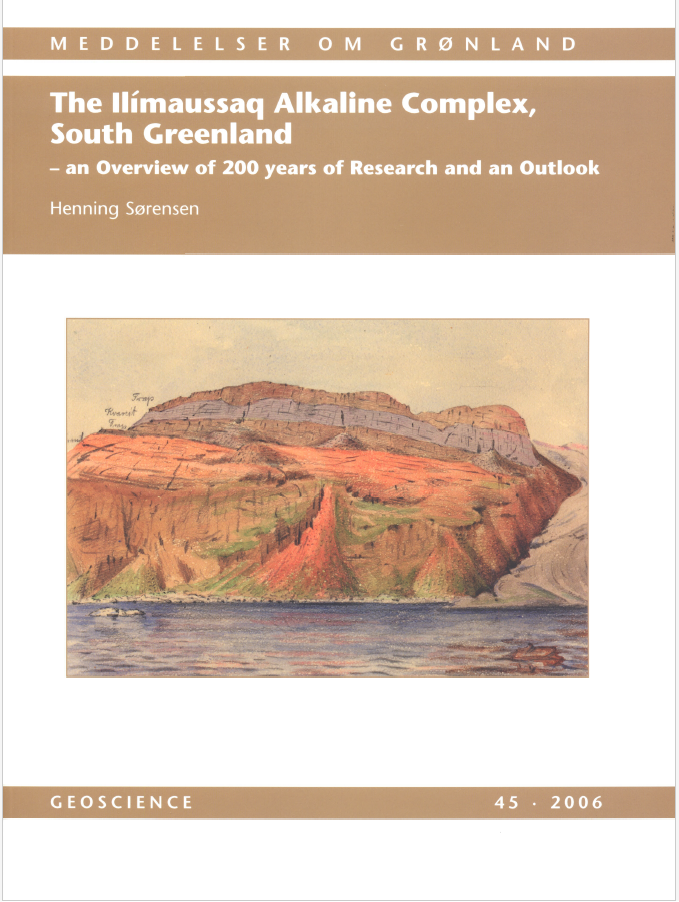The Ilímaussaq alkaline complex, South Greenland – an overview of 200 years of research and an outlook
DOI:
https://doi.org/10.7146/moggeosci.v45i.142185Abstract
The Ilímaussaq alkaline complex, South Greenland, the type locality of agpaitic nepheline syenites and of thirty minerals, among which arfvedsonite, eudialyte and sodalite, has been studied since 1806. The paper reviews the outcome of 200 years of geological investigations and presents an overview and a synthesis of the petrology of the complex. The site of the complex was invaded successively by augite syenitic, alkali granitic and nepheline syenitic melts. Remnants of the augite syenite and granite intrusions are found along the contacts of the nepheline syenites and as xenoliths in these. The nepheline syenites, which occupy the major part of the complex, are divided into a roof series, an intermediate series and a floor series. The roof series crystallized from the roof downward in the order pulaskite, foyaite, and the agpaitic rocks sodalite foyaite and naujaite. The floor series consists of cumulates: an inferred hidden part formed simultaneously with the roof series and an exposed part of layered agpaitic nepheline syenites (kakortokites) which were formed at least partly later than the roof series. The floor series passes gradually into the overlying intermediate series consisting of the agpaitic rock type called lujavrites. The lujavrites enclose rafts of naujaite and appear to have been emplaced by piecemeal stoping. The larger lujavrite masses are floor cumulates, but lujavrite dykes and sheets occupy fractures in the roof series rocks.
According to one model for the evolution of the complex, the nepheline syenites formed by consolidation of one magma batch in a closed system. The lujavrites were formed from the residual melts left after the formation of the roof series and the floor series and were sandwiched between these. A second model implies that the kakortokites and lujavrites formed from one or more separate magma pulses which intruded the already consolidated roof series rocks. This model is supported by new information on contact relations and especially on the petrology and geochemistry of a marginal pegmatitic facies that forms a rim around the kakortokite-lower aegirine lujavrite part of the complex. It consists of a massive-textured matrix intersected by pegmatites. The matrix was the first rock to form in the lowermost exposed part of the complex and gives information about the composition of the initial magma of the kakortokite-lujavrite sequence.
It is concluded that the agpaitic rocks of the complex were formed from at least two successive magma injections, which formed respectively the roof series and the kakortokite-lujavrite sequence.

Downloads
Published
How to Cite
Issue
Section
License
Coypyright by the authors and the Commision for Scientific Research in Greenland / Danish Polar Center. No parts of the publications may be reproduced in any form without the written permission by the copyright owners.

